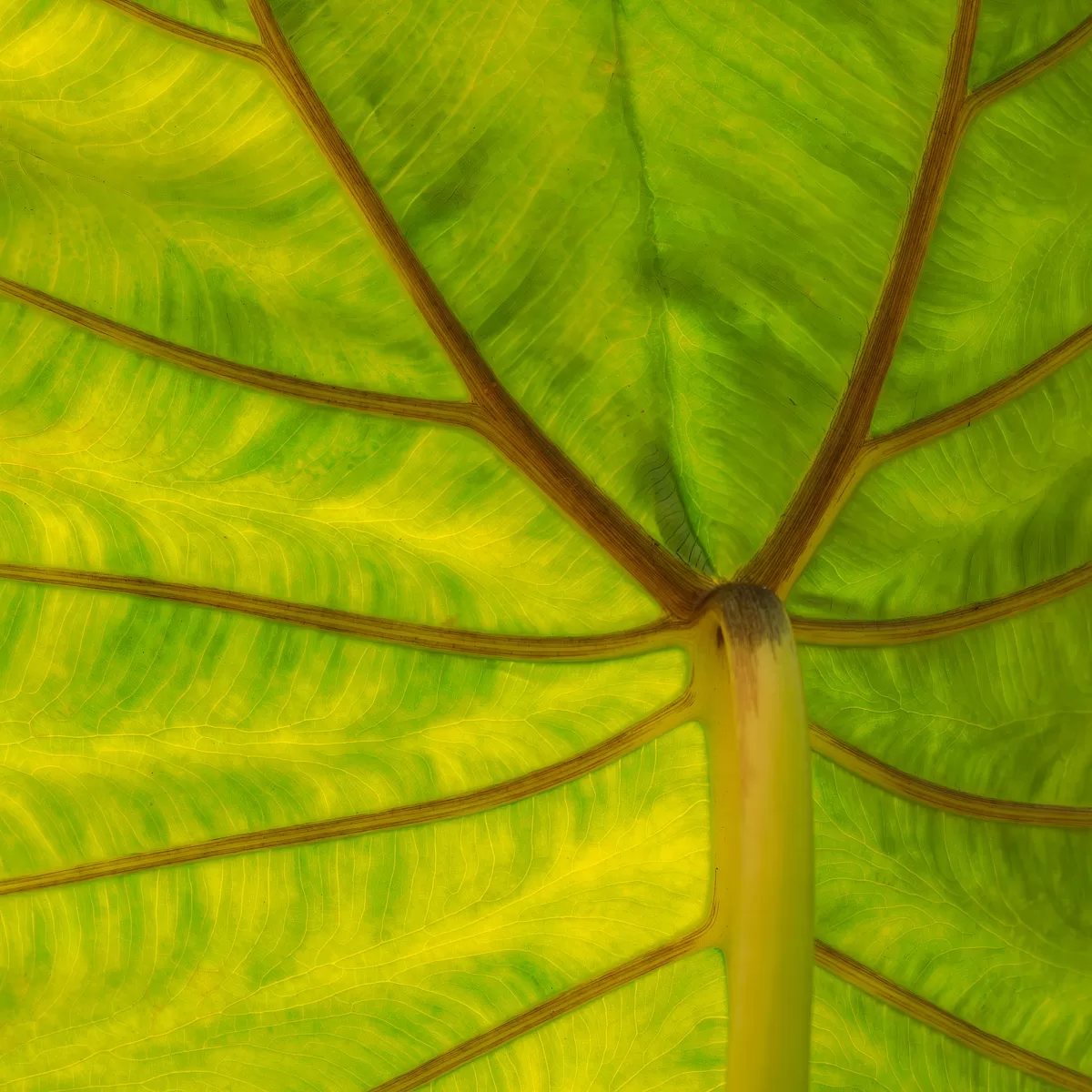
I was sitting on my porch one evening a couple of weeks ago. The sun was just about to set, and there was a slight hint of coolness in the air. It was the perfect, pre-autumnal Arkansas evening. As I sat there, I spotted the elephant ear plant at the edge of the porch as it swayed gently in the light evening breeze. It had been growing there every summer for years, and, while I had seen it, I had never really looked at it. On this night, I looked at it closely. What caught my eye were the patterns created by the veins in the leaf, and I thought they would create a wonderfully abstract closeup image, especially if backlit by the sun. All I had to do was wait for the right conditions to occur.
After waiting a few days, the conditions finally arrived that allowed me to get the image I was looking for. The afternoon sun was backlighting the leaf and making the patterns of veins and chlorophyll really stand out. I grabbed my tripod, camera, and 100-400mm lens and got set up to capture the image.
In my excitement, I failed to notice just how much the breeze was blowing the leaf. It wasn’t until after I got everything set up and looked at the scene on the back of my camera that I realized just how much movement there was. To account for this and how close I was set up to the leave meant I was going to need a fast shutter speed, so I selected 1/500th of a second. I also knew depth of field would be fairly shallow given how close the camera and telephoto lens were to the leaf. To compensate, I used an aperture of f/16.
Even though the leaf was brightly backlit, the shutter speed and aperture would result in an underexposed image at my desired ISO of 100, but I had no choice than to raise the ISO until the image was properly exposed, which, in this case, was ISO 1000. The issue with raising the ISO to 1000 is that my camera is an older camera, and a 1000 ISO is on the borderline of causing too much digital noise for my liking. But, I really didn’t have a choice if I wanted to make the picture. After everything was set up, I crossed my fingers and pressed the shutter button.
I was quite pleased with the image when I opened it on my computer, but the digital noise was as I expected – on the threshold of my acceptability. I have been reading a lot of good reviews of the new noise reduction tool in Lightroom, and I thought this image would be a great way to see if that tool was deserving of all the hype it has been getting. I clicked the button, sat back, and let Lightroom do its magic.
And, magic it was. The software eliminated the noise while also retaining all the detail. After that, it was just a matter of making some adjustments to further enhance the vein details and to remove some unsightly blemishes on the leaf to get to this final image.
Ai-Denoise in Lightroom is a game changer for challenging situations like the one you describe here. I’ve made hand-held close-ups and macro photos at ISO 3200 which I then ran through it, and the results are fantastic. Nice description of the process. (and beautiful result of course!)
Thank you for reading Alex. I still use an “old” Canon 5D Mk IV. Once I get the ISO up to 1000 or 1250, the noise starts getting noticeable, at least to me. I’ve tried other denoise programs in the past and, while did a decent job of mitigating the noise, they tended to soften the image. I’ve just recently tried Lightroom’s denoise tool and, so far, it’s been incredible. Reduces/eliminates the noice without softening the image. I can’t ask for anything more than that. I’m excited just thinking about all the possibilities it’s going to open up.